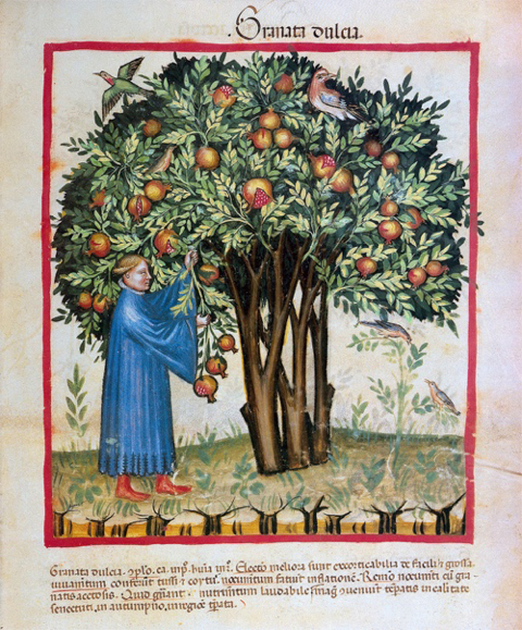Moors left a significant mark on medieval Europe, especially with their conquest of the Iberian Peninsula in 711 AD. They ruled over Spain for several centuries, transforming it culturally, socially and politically. However, the term “Moors” does not refer to a single, homogenous group, but rather to the medieval Muslim inhabitants of various regions, including Sicily, Malta, the Maghreb and al-Andalus.
Despite their influence on Europe, there is still a lot we don’t really know about the Moors and the time when they were a powerful contender within Europe. In this article, we will delve into 15 lesser-known facts about the Moors that shed light on their history, providing a deeper understanding of the Moors’ impact on European history and their enduring legacy.
1. The 711 AD Moorish Invasion Was a Major Clash of Cultures
The threat faced by Christian Spain across the Strait of Gibraltar was vastly different from anything they had encountered before. The Muslim Moors represented a distinct and unfamiliar culture, completely separate from the European Christian world. As a result of this clash of cultures, a new and distinct set of traditions and customs quickly emerged. Even today, the Moors’ influence on Spain is palpable, with traces of their culture evident in everyday aspects including language, food and architecture. Though the initial clash between Islam and Christianity was hostile, it ultimately served as a wellspring of inspiration, leaving an enduring legacy that continues to shape Spanish culture to this day.
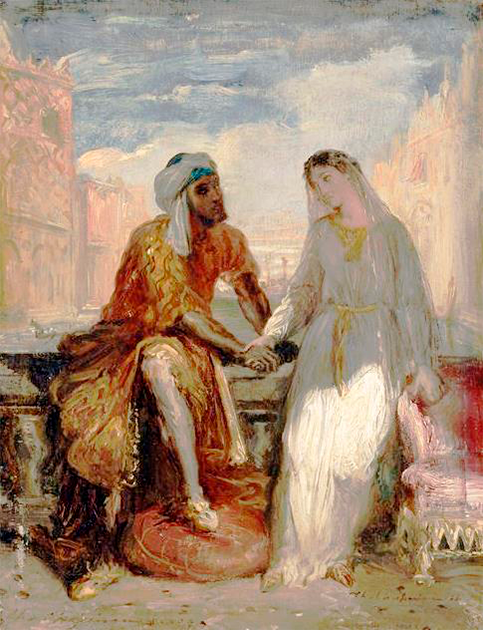
The Moors permeated European culture. Shakespeare’s Othello, depicted here with Desdemona in Venice in a painting by Théodore Chassériau, was a Moor. ( Public domain )
2. The Lead Character of Shakespeare’s Othello Is a Moor
Shakespeare’s Othello, also known as the Moor of Venice, centers around a noble Moorish General in the employ of the Venetian army. This play demonstrates that even during Shakespeare’s time, the Moors remained an object of fascination in Europe due to their exotic appearance and distinct culture. Moreover, the historicity of Othello suggests that the Moors were highly skilled and capable of attaining prestigious positions throughout Europe, irrespective of their origins or religion.
The Moors introduced a variety of fruits and vegetables that were previously unknown in both Spain and Europe, and thus deemed exotic novelties. These items included peaches, lemons, oranges, saffron, cotton, rice, silk, sugar cane, apricots, figs, dates, pomegranates and many others. Although commonplace today, during the Middle Ages these items were almost alien to the Spanish. Today, centuries later, they have become staples of Spanish production and diet.
Man picking fruit from a pomegranate tree. (Wellcome Collection / CC BY 4.0 )
4. The Arabic Numerals We Use Today Were Brought to Europe by the Moors
The classic numbers we all use and love today are of Arabic origin, introduced by the Moors upon their arrival into Spain. These numbers were quickly adopted as they were simpler and easier to use than the complex and aged system of Roman numerals. Additionally, the Moors also introduced paper to Europe, at a time when parchment, made of animal skins, was the common writing medium in medieval Spain. This was a major development essential for the progress of European civilization.
5. The Moors Were Several Steps Ahead of Medieval Europe
At the time of their conquest of the Iberian Peninsula , the advanced civilization of the Arabs was renowned for its architecture, science, mathematics and exploration. Upon their arrival in Spain, the Moors introduced architectural techniques that amazed European stonemasons. One of the most impressive examples of Moorish architecture is the Alhambra, a palace complex and fortress located in Granada, Spain. Construction began in 1238, and it surpassed any similar palace in grandeur and beauty. Today, it remains one of the best-preserved palaces of the Islamic world.
6. Chess Spread Throughout Europe Thanks to the Moors
Even though chess is over 1,500 years old, it was first introduced to Europe in its current form by the Moors. Chess spread from India to the Arabic world and was introduced to Spain by the Moors. It quickly became popular and swept across Europe’s courts and society. In medieval Spain, chess was a popular game of strategy and patience. The first written mention of chess in Spain dates back to 1010 AD, in the Catalonian Testament.

The bell tower of the Cathedral in Seville is known as La Giralda, built as the minaret for the Great Mosque of Seville during the reign of the Almohad Dynasty in the 9th century. After the reconquest the mosque was symbolically converted into a Cathedral. ( Aranami / Adobe Stock)
7. The Moors Were Very Strict About Their Hygiene
The Moors were known for their love of cleanliness, with a popular saying claiming that a Moor “would rather go without bread than without soap.” Due to their traditions and the rigors of their religion, the Moors were fond of looking spic and span, and encouraged frequent bathing; In the Moorish town of Cordoba, there were around 900 public baths . This allowed for proper hygiene during a time when plumbing and running water were not yet widely available. Some sources also claim that the Moors brought some form of soap to Europe, introducing a new era of cleanliness.
8. The Career of Ziryab, the Famed Moorish Musician, Flourished in Spain
Ziryab, whose name meant “blackbird,” was a renowned poet, oud and lute player adored in the Islamic world. Having arrived in Spain in 822, Ziryab settled in Cordoba, where he became an instant court favorite. Ziryab was very influential, setting new fashion trends, inspiring singing and poetry, and even inventing a type of deodorant and toothpaste. Described as a major trendsetter, Ziryab was a great lover of local cuisine, having invented many new culinary recipes in Moorish Spain. Could it be that through the efforts of a single, visionary man, the whole of Europe benefited?
9. Education Was Very Important to the Moors
Education was of utmost importance to the Moors, who ensured that it was universally available to all within their realm. This stood in stark contrast to medieval Europe, where 90% of the population remained illiterate, and education was reserved for only the wealthiest nobles and clergy. In fact, there were even some European Kings who could not read or write. The Moors established 17 great universities in Spain, located in cities such as Cordoba, Malaga, Granada, Seville, Toledo and Almeria, among others.
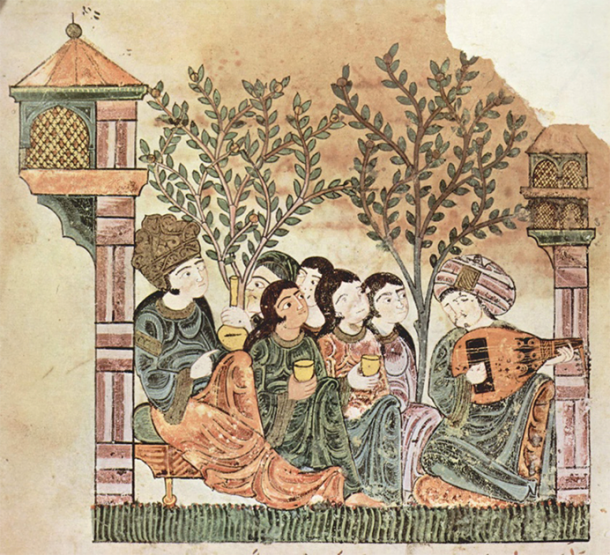
The renowned musician Ziryab settled in Cordoba after the Moors conquered the Iberian Peninsula. He is depicted here singing and playing the lute in his garden. ( Public domain )
10. Numerous Moorish Words Found Their Way into Modern Spanish and English
After their arrival in Europe, the Moors brought with them new concepts and words that quickly became a standard part of everyday language. Spanish has up to 4,000 words of Arabic origin, including algebra, checkmate, and influenza. Other examples are cipher, alcohol, chemistry, typhoon, orange, alkaline, cable and nadir.
11. One of the Best Histories of the Moors in Al-Andalus Was Written Around 1617
The author was a famed Algerian historian, Aḥmad ibn Muḥammad al-Maqqarī al-Tilmisānī. His work is named “Nafḥ aṭ-ṭīb”, or “Breath of Perfume”, and it is a compendium of the entire history of al-Andalus and the Moors who dwelt there. It was such a detailed and influential work that it provided the basis for the research of Muslim Spain for numerous historians up to the 20th century. Al-Maqqari was inspired by the glories of Moorish Iberia, and wrote his work based on the pre-existing accounts he discovered in the Saadi Sultanate library at Marrakesh in Morocco.
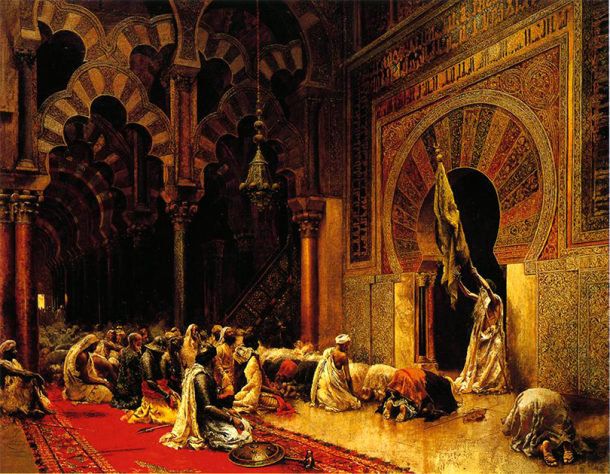
A Moor preaching at the mosque in Cordoba, in a painting by Edwin Lord Weeks circa 1880.( Public domain )
12. At the Height of Moorish Rule, Cordoba Was the Most Modern City in Europe
During the 10th and 11th centuries, Cordoba was the very center of the Moorish world, and a great center of learning, education, and economy. The second-biggest city in Europe, Cordoba had over 80 libraries, as well as some of the most advanced knowledge of medicine, mathematics, botany and astronomy – far superior to the rest of Europe. It was also very modern for its time, having beautiful architecture, raised sidewalks for pedestrians, many miles of road and even street lighting.
13. The Moors Were Very Industrious
Upon their arrival in Iberia, the Moors saw the potential in the old Roman irrigation systems they found and quickly adopted, enhanced and revived them. This led to a surge in agricultural productivity and a boost in the economy. They were also able to cultivate new crops they brought with them such as lemons, oranges, figs, dates, and apricots. Soon, Spain became one of the largest producers of crops in Europe, all thanks to the Moors’ innovative irrigation techniques.
14. The Moors Greatly Transformed Spanish Cuisine
Spices were a rare commodity for Europeans, and their food was often considered bland. The Moors changed that by bringing over hundreds of unique spices, new recipes and innovative methods of preparing food. This culinary revolution gave rise to many wondrous dishes that we still enjoy today. The Moorish spice markets were famous for their variety, offering choice for cooks of all styles. The colors and smells of these medieval markets must have been truly incredible.
15. The Moors Had a Major Impact on the European Renaissance
Thanks to their introduction of arts, education, astronomy, mathematics and music, the Moors greatly enhanced existing European culture. Their architecture was a whirlwind of color and detail, their cuisine a typhoon of spices and flavors, their music enigmatic and exotic, their fashion sense unique and flamboyant. The Moors brought a vibrant splash of color to an otherwise gray medieval Europe. Despite being invaders, whose arrival often brought death and suffering, their greatest contribution was the infusion of artistic and cultural richness that transformed the region.
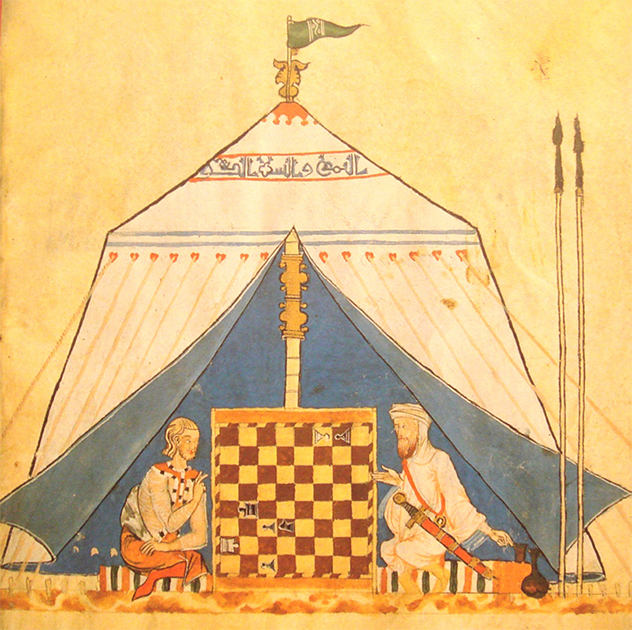
Medieval painting depicting a Christian and a Moor playing chess. ( Public domain )
An Invasion That Brought Both Good and Bad
The Moors arrived during a tumultuous time in Iberia, which had seen many cultures come and go leaving the peninsula ravaged by war and soaked in blood. The Moors capitalized on this situation, quickly overwhelming the Visigothic Kingdom and revitalizing Spain with their colorful culture in the process of their conquest. The presence of the Moors in Europe cannot be overlooked. After all, sometimes it takes an invasion to breath new life into a civilization and introduce beneficial aspects into a culture.
The Moors endured for several centuries in Iberia, but Spanish Christians continued to yearn their lost territory. In response they launched the Reconquista, a war which in just a few generations drove the Moors back to the sea until they were finally expelled from the Iberian Peninsula. Yet even so, the marks left behind by the Moors in Spain would never be erased.
Top image: The Moors left behind a legacy of culture and architecture, such as the Alhambra palace complex in Granada, Spain. Source: lunamarina / Adobe Stock
By Aleksa Vučković
Source: ancient-origins.net


